AIR 15 Feature: Carter Shocket
Today I got to sit and chat with Carter Shocket, a Brooklyn-based interdisciplinary artist who is a current resident of Textile Art Center’s AIR Cycle 15. Carter is originally from North Carolina and is now partially represented by Eleventh Hour Art in Brooklyn. His work includes public installation, collaboration, weaving, tapestry, and other process-based textile art.
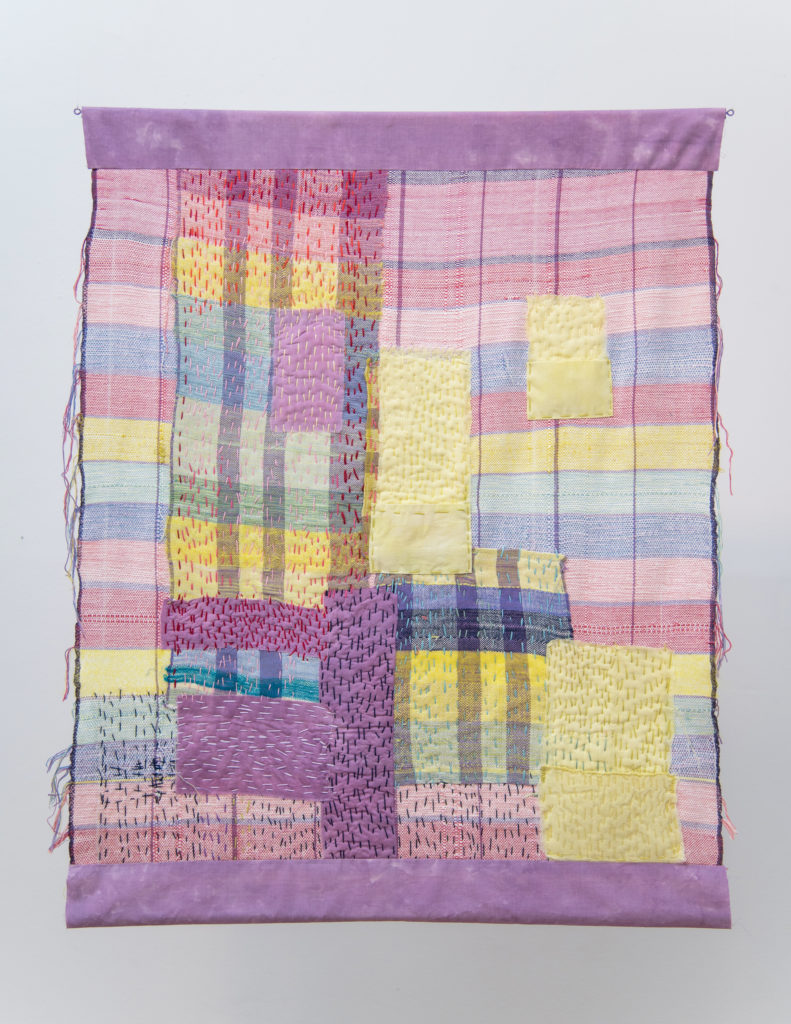
I think I have an understanding of experiences that happen in my life, that are outside the realm of society. These kinds of magical experiences I think are what connect a lot of trans people who don’t actually know each other. I’m really into finding the ways that I can feel connected to my community, past and present, historical and future.
Allison: So I’ve read your artist statement, went on your website and did some preliminary research, and I get the sense that who you are and the people around you are a big source of inspiration.
Carter: Yeah, definitely. Inspiration, definitely yes, but I feel like I can’t make art without community. So maybe it’s less of an inspiration, compared to other things, but I think community is more like the tools and the foundation. It’s where the work comes out of. So yes, definitely yes, but in a different way.
Allison: I like that. That sort of leads into my next question: Can you tell me about your other sources of inspiration?
Carter: I love pulling from philosophy and literature, poetry and myth. I think there’s an innate sense of divine, in a spiritual or mythical sense, that I find in queer art spaces and trans community. As a trans person navigating life with other trans people, I think to survive we build a kind of mythos, almost like a celestial world. So I try to connect to that and let that guide me, especially in my image-making work.
Allison: I noticed a phrase in your artist statement that I really liked, can you tell me more about the trans supernatural?
Carter: I think I have an understanding of experiences that happen in my life, that are outside the realm of society. These kinds of magical experiences I think are what connect a lot of trans people who don’t actually know each other. I’m really into finding the ways that I can feel connected to my community, past and present, historical and future. I have this theory that these supernatural, otherworldly experiences can connect us because we are people living in a society that doesn’t make sense of us, there’s no space for us. There’s an inherent friction to that and that friction can spark these strange experiences of invisible, secret things. Real but not actual. Naming those feelings and experiences and turning them into art is my way of saying that they are real, capturing it. And if you can see it and also experience that, it will connect us. I’m always looking for a way to feel connected.
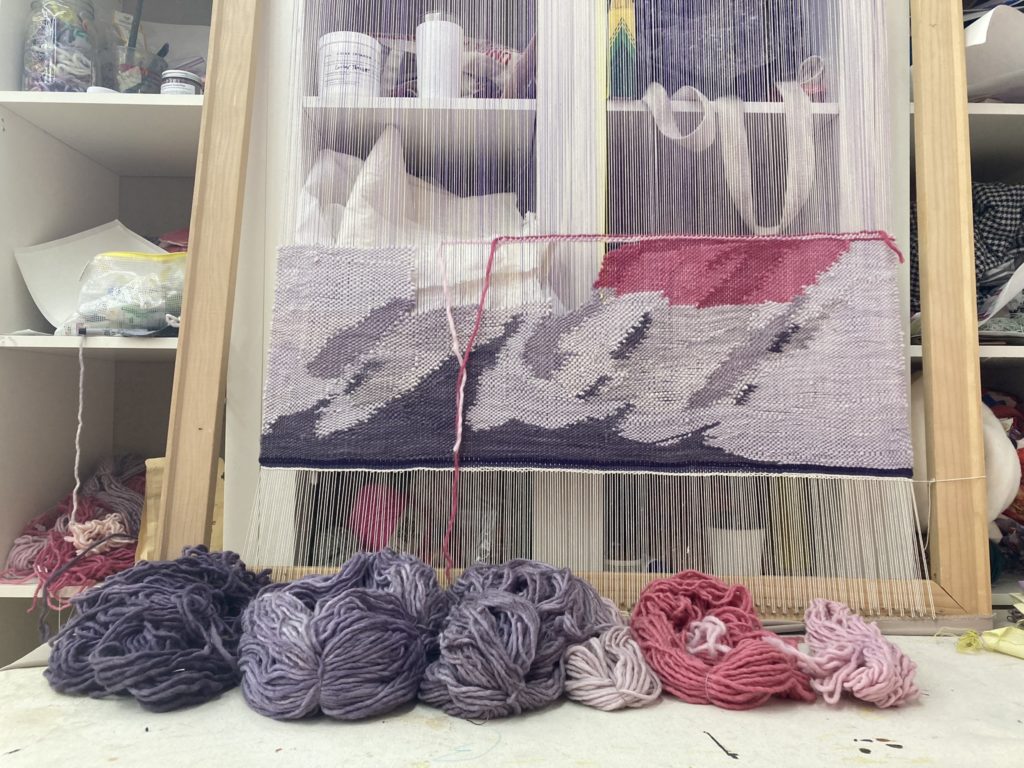
Allison: How does your own identity inform your art practice?
Carter: I think it’s similar to the question about community. It just is. There’s no way to do art without it. It’s not like I’m choosing between making art about, say, the environment or about my identity, it’s just inherently present. I think what’s interesting about that question is that I’m always asking it of the viewer. The viewer will always understand my art through my identity so it’s a way to force somebody to read something in a transmasculine way. Which is and is not intentional. I don’t think it’s possible for them to not do that. But I have been coming up on this question of who my audience is, because I work in a gallery and am constantly thinking about showing work to an audience of cis potential buyers. It’s always going to be filtered through that. But being in this residency has allowed me to take a breath away from that, you know, that’s my job but this is for my art. I recently put together a trans crit night at my apartment and I was finishing this piece behind me. Once I planned that night and could think, “I’m going to be showing this to a group of all trans people,” that perspective completely changed the direction of how I finished the piece. I wasn’t thinking that I needed to get this ready for an audience of all cis people and wonder what they’re going to understand, wondering how explicit or literal I should be. It just took that pressure off.
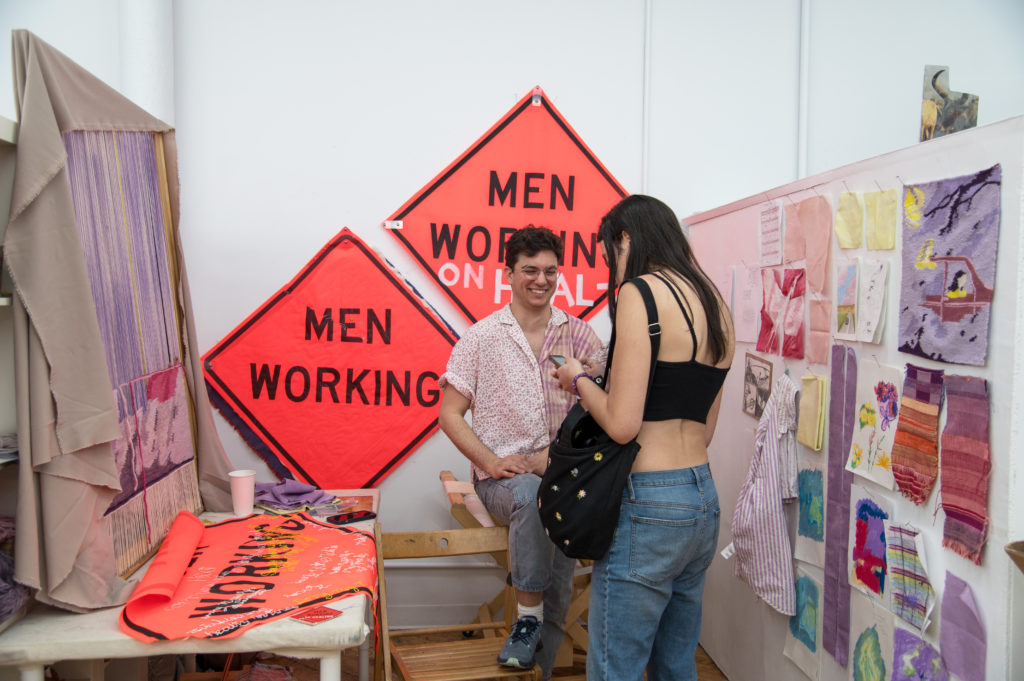
Allison: How do you want viewers to engage with your work?
Carter: I really want my work to be approached with softness and reflection. That doesn’t mean it’s devoid of humor or even nuance and bite, but I think I work outside of “cringe culture.” It can be fun, to constantly be cynical and making fun of things; everything should be criticized. But I feel myself being an old millennial in my work, I wouldn’t be able to make art if I was constantly be thinking about how it would be criticized. I have to make it from a genuine place of sincerity and I ask that people who engage with it allow that sincerity to be present as well. I’m not afraid of sincerity even if it can be saccharine or soft. I try to have my art be vulnerable in a brave way. I find vulnerability to be difficult, so I try to go towards it.
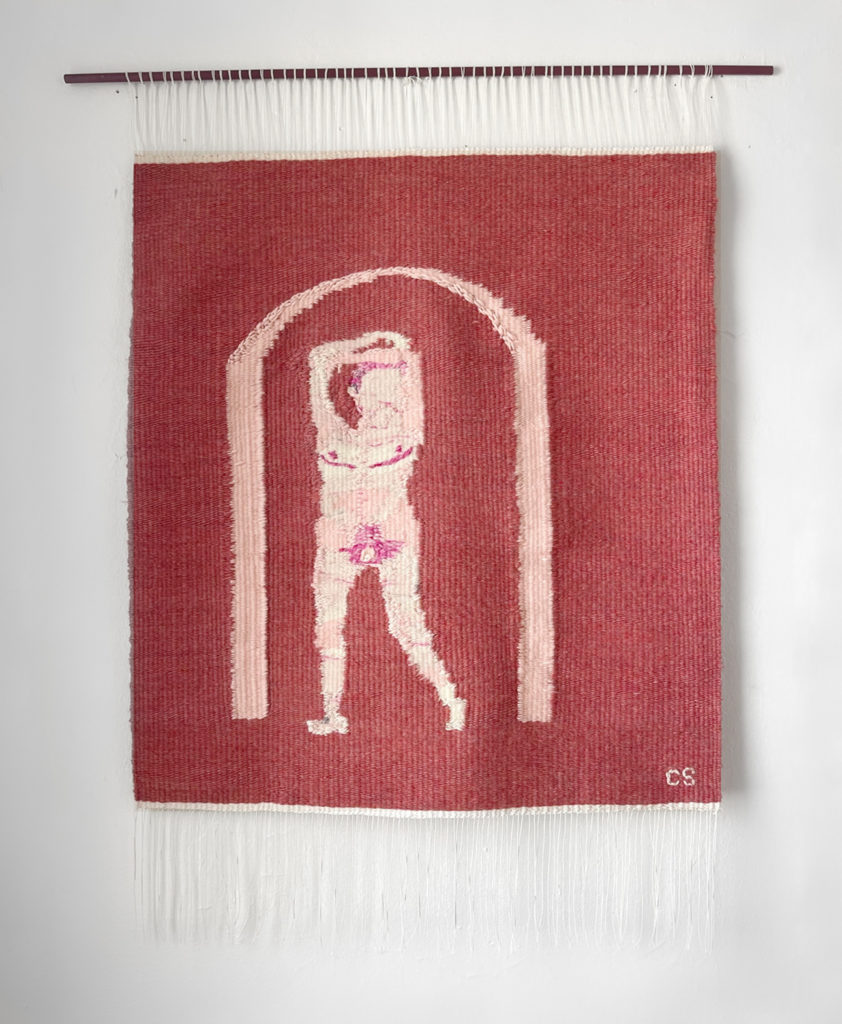
Allison: What are you working on, thinking about, and exploring in this residency?
Carter: I’m sort of coming back to my original ideas from when I started fiber art, which has been nice. I think I’m moving away from thinking about the gallery space and more thinking about myself as an artist. Those ideas are really around mapping, researching systems of care throughout time, ways that we can connect and care for each other in genuine ways. I recently had a studio visit, and from the questions I was being asked, I had a revelation. I said, “I’m trying to figure out how we can take better care of each other.” And he asked me what the maps are doing. I said, “They’re mapping a way there.” I’m starting with what I know and creating these maps out of data because I don’t know what the answer is and I’m trying to find it. I think these maps can take us there.
Allison: In your opinion, why is textile art important right now? It could be personally or societally.
Carter: It’s important to me because you can truly make something. You’re really making the thing as opposed to layering or mark-making on a surface, and that is really amazing. You’re not just putting stuff on other stuff, you’re literally involved in every thread of the process. For me, it’s just about putting myself in every part of making the art. It’s very embodied to me.
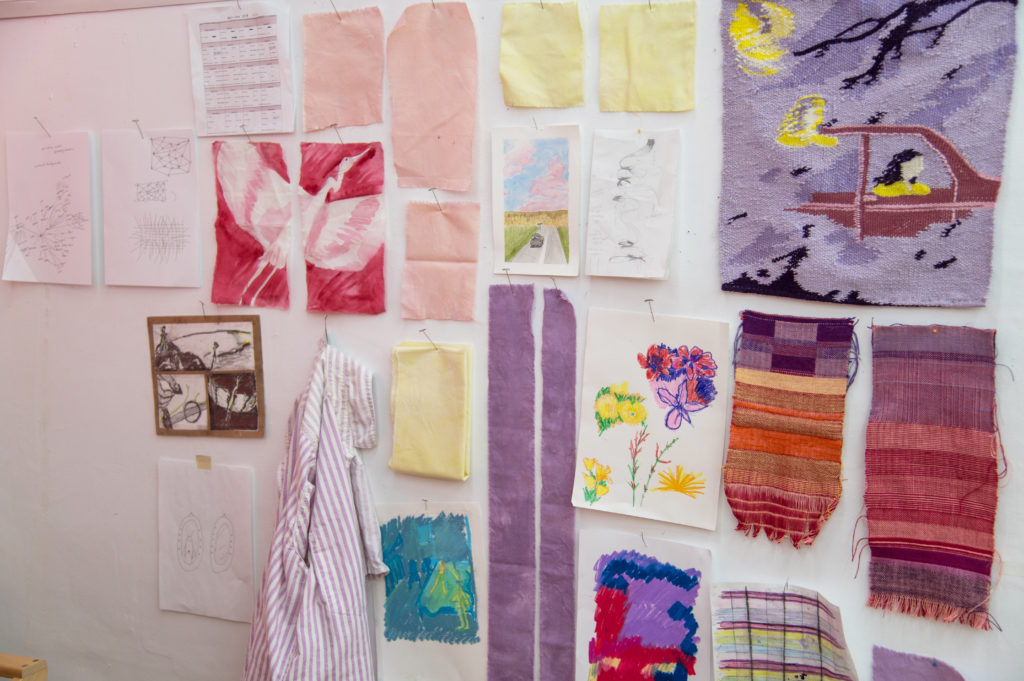
It was a pleasure and a privilege to have such a thoughtful conversation with Carter. His work can be found at cartershocket.com, and I certainly suggest checking it out.